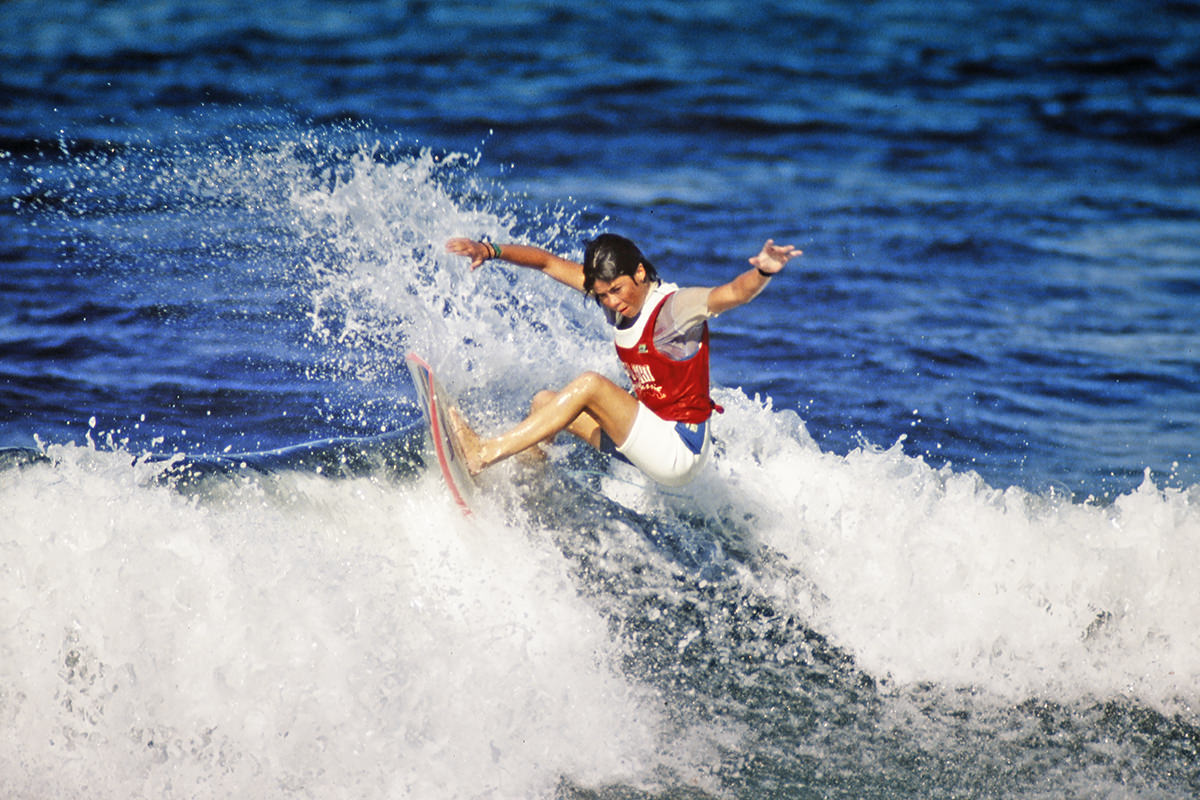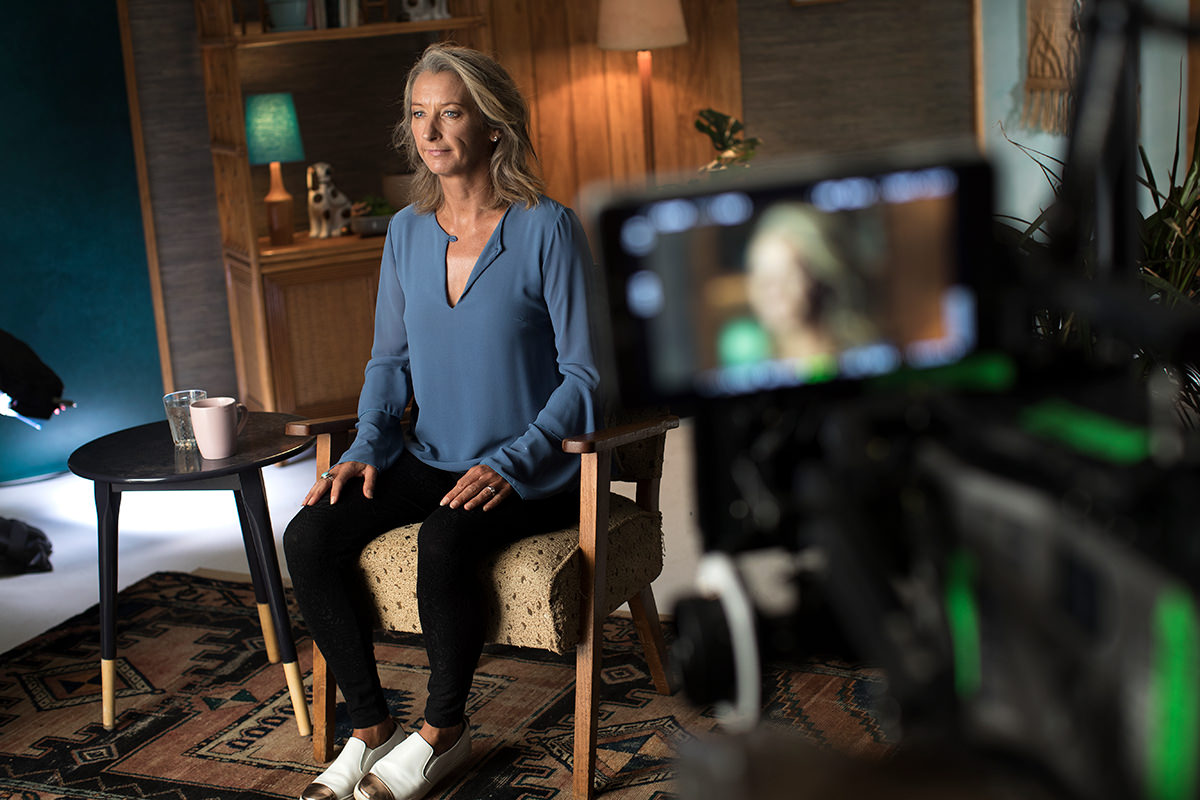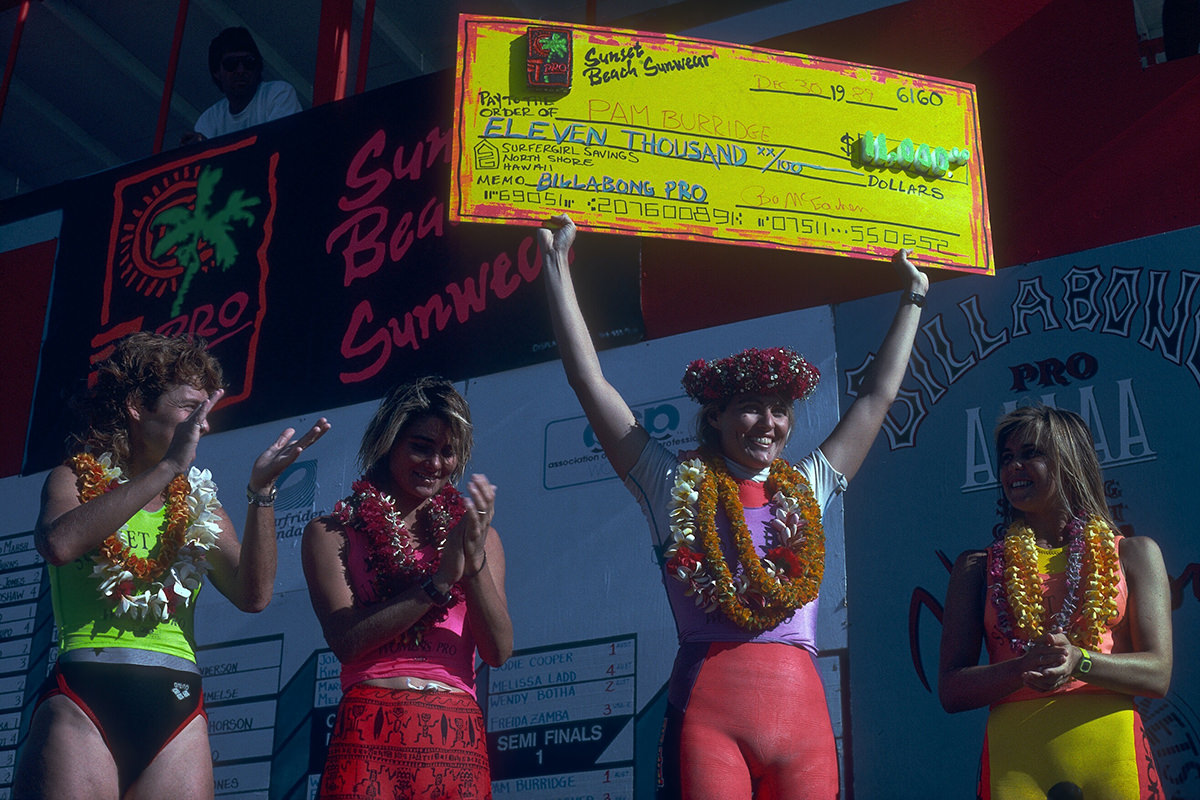Girls Can’t Surf: carving out the feature doc
Girls Can’t Surf director/producer Christopher Nelius and producer Michaela Perske on the challenges of bringing an untold sporting documentary to the big screen.
 Pauline Menczer
Pauline Menczer
When director, producer and co-writer Christopher Nelius first started developing Girls Can’t Surf in 2016, he knew there was an extraordinary film in there – a never-before-told story about the larger-than-life women of the 80s and 90s surfing scene who battled for inclusion, recognition and equality in the male-dominated sport. But he couldn’t know that fate would soon step in with the perfect ending to this story.
“I knew that there was material here for a film. That it hadn't been told before. And I'd sort of done some pre interviews with Pam Burridge, Pauline Menczer and Jodie Cooper who are such authentic people [with] such great voices and they've such extraordinary lives,” he says.
“I knew there was a film in that. But with any doco you're always like, how do I edit it? Because it all has to come and point to the ending.”
The answer came in the form of a photo of the female and male Ballito Pro Junior winners, which went viral in 2018 over the 50% difference in pay between the two cheques. After huge online backlash, the World Surf League (WSL) responded by fixing the pay gap, announcing equal prize money for women from 2019.
Nelius says when that historical moment happened, for surfing to have such a redemption because of what these women went through and fought for, it gave him and co-writer/editor Julie-Anne De Ruvo a focal point to build to.
“When you know what your ending is, it makes the rest of the story a bit easier to write, because you write the story in the edit suite in a documentary.”
Not that the process was then ‘easy’. Producer Michaela Perske says when she was approached in 2018, Nelius, De Ruvo and executive producer Michael Hilliard of FINCH had already done a huge amount of work – but they all had a long road ahead too for a film with so much archival footage.
Nelius and Perske – naturally – ran into each other while surfing at Bondi and after seeing a deck and teaser, immediately came on board.
“They had reached out to most of the key women, the talent was in place, the story was in place, Madman was in place [as distributor], and then the rest of it was coming in and raising the finances,” she says (Screen Australia and Screen NSW provided additional development funding). “Then we made it a little bit bigger in terms of some of the international characters that we decided to bring out to Australia and film.”
Those international characters included surfing greats Jolene Smith, Jorja Smith, Frieda Zamba, Alisa Schwarzstein-Cairns, Lisa Andersen and Rochelle Ballard, who joined a line-up of Australian greats such as Jodie Cooper, Pam Burridge, Pauline Menczer, Wendy Botha and Layne Beachley. Throughout Girls Can’t Surf, these renegade badasses of the surfing world light up the screen with their humour, candid retellings, frank vulnerability and fierce passion for the sport and their place in it.
“I think I got really lucky with these women,” Nelius says. “And this is partly why I wanted to do this story is there's something about that generation from the 1980s in particular: its pre Internet, it's at a time when the sport and where society was going through the explosion of the 80s with all this hope and stars in their eyes.
“It just produced these really engaging people that have a lot of personality, a lot of passion and not too much of a filter. They're just so magnetic and each in different ways. But as a group, they've kind of all got ‘it’.”
Perske says because they are all such engaging people, along with cinematographer Anna Howard ACS, they made the decision to build in the studio and create a set, so they could film in-depth interviews over a longer period of time.
 Layne Beachley in Girls Can't Surf (Photo credit: Stephen Dupont)
Layne Beachley in Girls Can't Surf (Photo credit: Stephen Dupont)
“It’s a fantastic thing because we covered so much of their lives, but it did mean that for each person, we had probably about seven or eight hours’ worth of interviews… you could have easily made a film on each of these women,” she says.
Nelius adds: “we had a five and a half hour assembly of the interview story [and] there's a lot of really good stuff on the cutting room floor.”
He says there were so many elements for De Ruvo and him to juggle when they were in the edit.
“That's why I knew from the very beginning that she and I needed to be co-writers, because you really do write it with your editor. And so you're balancing the story, the history, the personal, and then the more kind of the institutional story, if you like - what was going on in the wider sport.”
Sometimes in an interview, one of the surfers might reference an event or a moment, and it was up to researcher Lindy Boylan and the team to try and track down the archival footage – no mean feat when you consider that part of the point of Girls Can’t Surf is how underappreciated and undocumented women’s surfing was at the time.
“The joy of pulling together all the archives, which I say with slight irony,” Perske says.
The archives vary from early images shot on film, through to Hi-8, VHS, early digital video tape, all the way to present day HD sports broadcasting.
Nelius says, “I think people can really feel how much work went into the archive research on this film, hopefully without it being too sort distracting.”
It was with an unfinished cut that they applied for the 2020 Tribeca Film Festival, and got in.
“We were blown away and high-fiving and stoked,” Nelius remembers. “Particularly because they had selected it for a programme that was about women in the workplace. They were going to have a retrospective on 9 to 5 and Michaela was fantasising about Dolly Parton turning up-“
“I had my heart set on it,” Perske says. “I was like I am going to meet Dolly Parton and we were planning on taking Jodie and Pam with us to New York… and then the world fell over.”
COVID-19 happened. At first, it seemed like Tribeca would just be delayed a month or so, to May 2020. As one of the first film festivals to be impacted by the pandemic, Tribeca wasn’t able to pivot to an online festival either. Instead, the plan is for it to screen in the festival this year, with a date set for June.
Nelius says they always believed Girls Can’t Surf would have global reach.
“It really is an international story, where Australia plays a predominant role. [Although] it's really culturally speaking, something that Australia should be more proud of. I mean Australia's been proud of surfing [but] we can lay claim to a lot of women surfing.”
 Pam Burridge (Photo credit: Paul Sargent)
Pam Burridge (Photo credit: Paul Sargent)
When Girls Can’t Surf has its local release in Australian cinemas on 11 March, he hopes audiences discover the same thing he did making it.
“There's a story here about how women have to work harder in order to create their own destinies,” he says. “And I just hope people come out of the film seeing a firsthand account of why women should be given equal opportunity and how it makes the world a better place. Because surfing now is way better, having had equal pay. It's future is so much brighter. And if it had continued along the path that it was on in the 1980s, it just wouldn't be what it is today.”
Perske adds that her big takeaway was that change is possible.
“In a time where you can feel quite despondent and as though nothing seems to shift… what these women did: that they didn't give up and now equal pay has happened in their lifetime. To me, it just makes me kind of tearfully happy every time I think about that,” she says. “So don't give up.”
Girls Can’t Surf release in Australian cinemas through Madman Films on 11 March, with select preview Q&A screenings around the country now. Visit here for more.

What to read next
Director Jessica Hobbs on how the Australian television industry prepared her for working on hit Netflix series The Crown.
08 Dec 2020
Caris Bizzaca